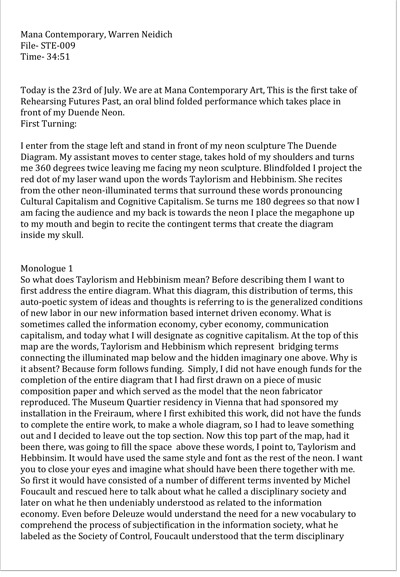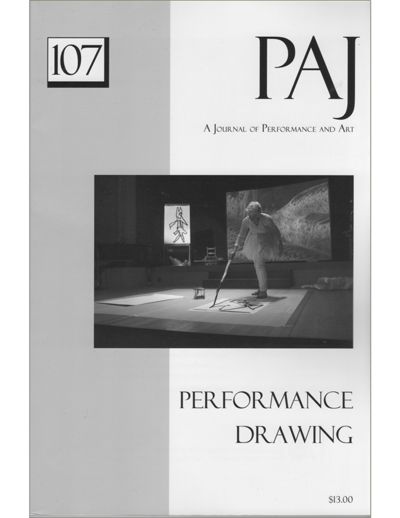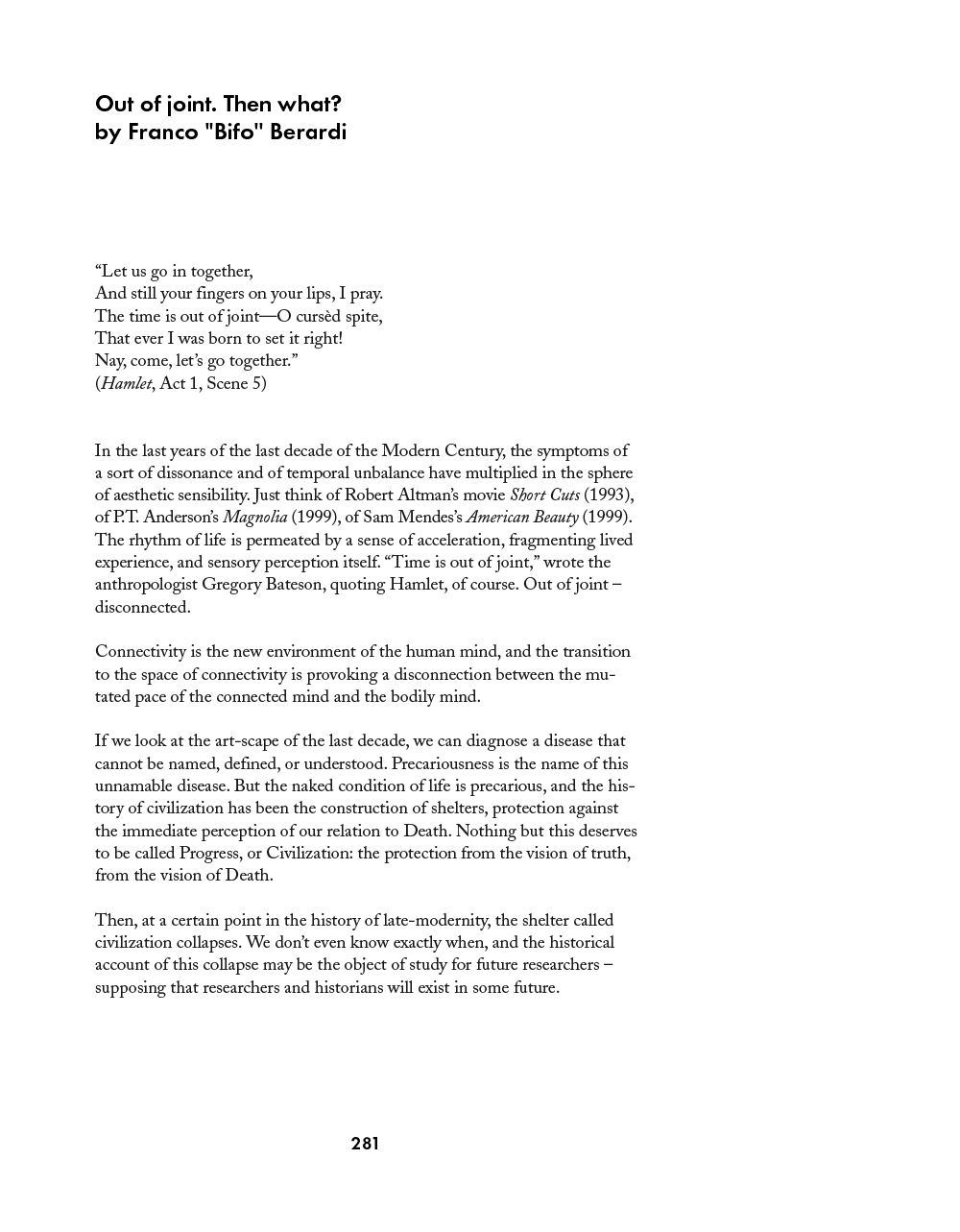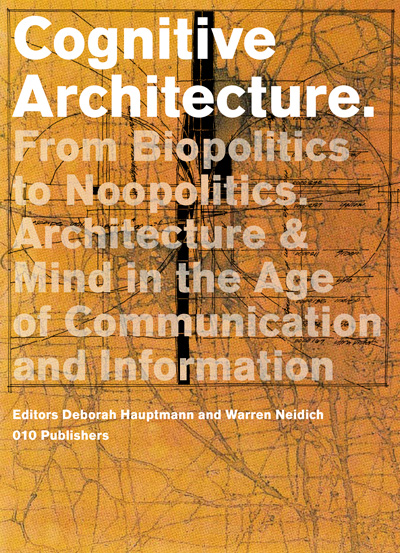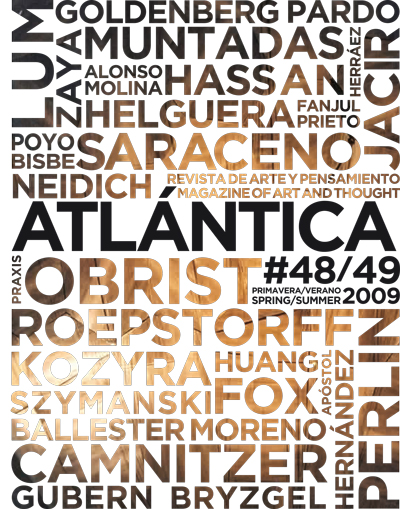Berlin Works: The Noologist’s Handbook and Other Art Experiments
Contributors: Suzana Milevska, Claudia Slaner, Julia Wirxel, John C. Welchman, Bruce Wexler, John Roberts, Franco “Bifo” Berardi
Archive Books, 2013
Download Catalog (low-res) 74Mb
This publication focuses on a series of recent projects of the Berlin-based American artist Warren Neidich, whose central preoccupation is, in fact, art research. More importantly, in focusing upon art practices that revolve around profound investigations of the complex reciprocal relation between contemporary theories of cognition, neuroplasticity, and art, on the one hand, and the emergence of new reciprocal relations between mind and creativity in the context of cognitive capitalism, semiocapitalism, and neurobiopolitics, on the other, Neidich’s research produces outcomes that challenge the very notions of the development of truth and knowledge.
Texts by Franco “Bifo” Berardi, John Roberts, Suzana Milevska, John C. Welchman, Bruce Wexler, and an interview with Warren Neidich by Claudia Slaner.
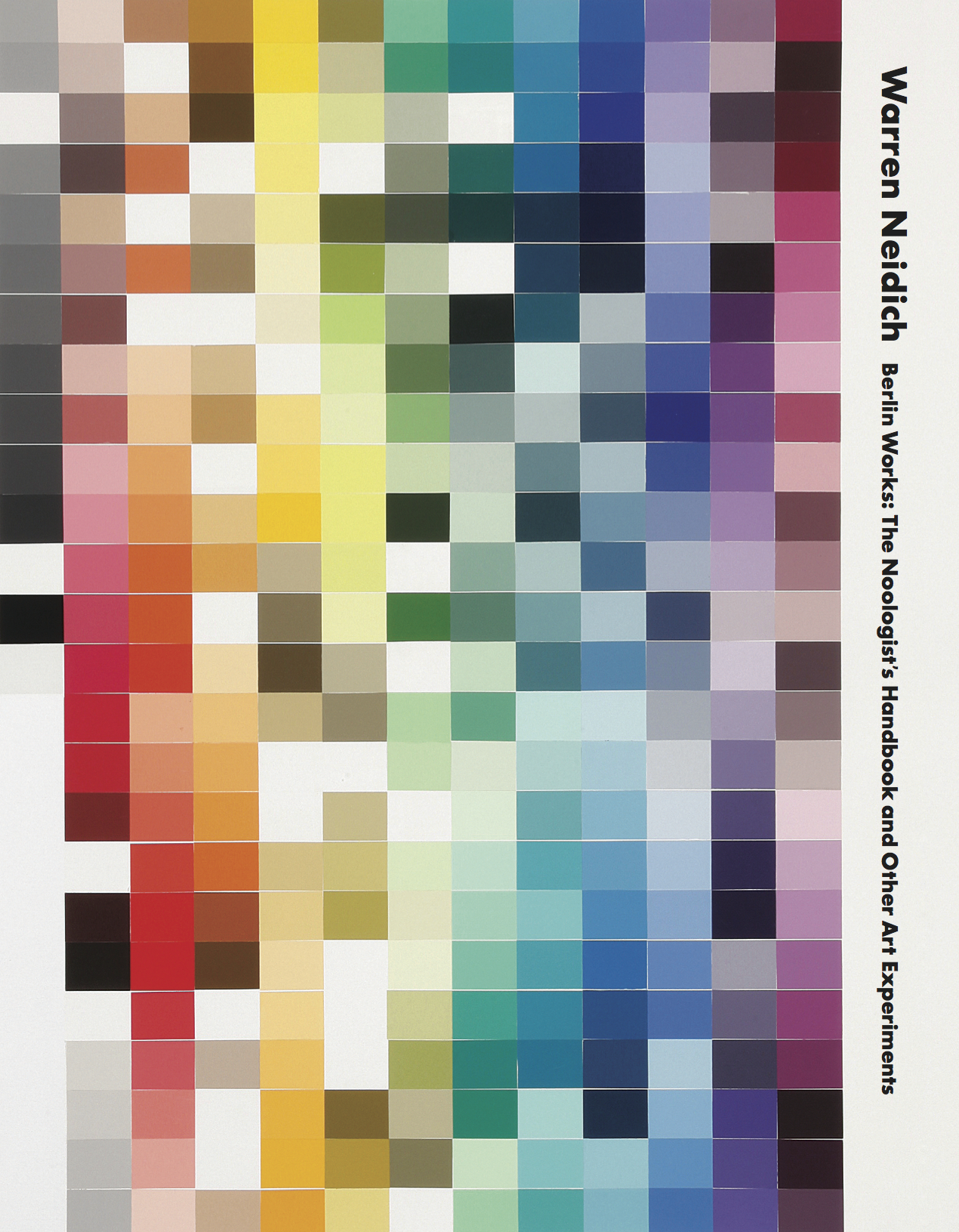
[su_spacer]
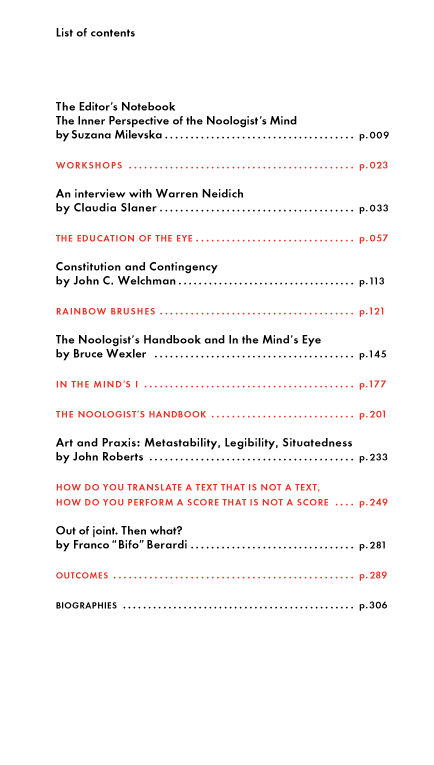
[su_spacer]
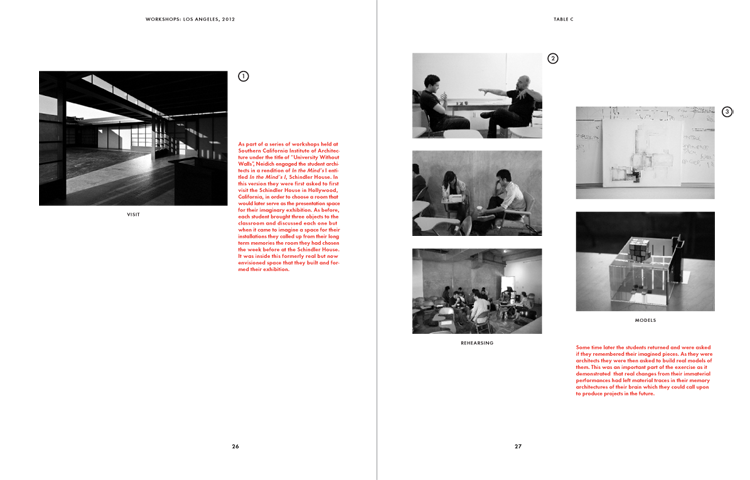
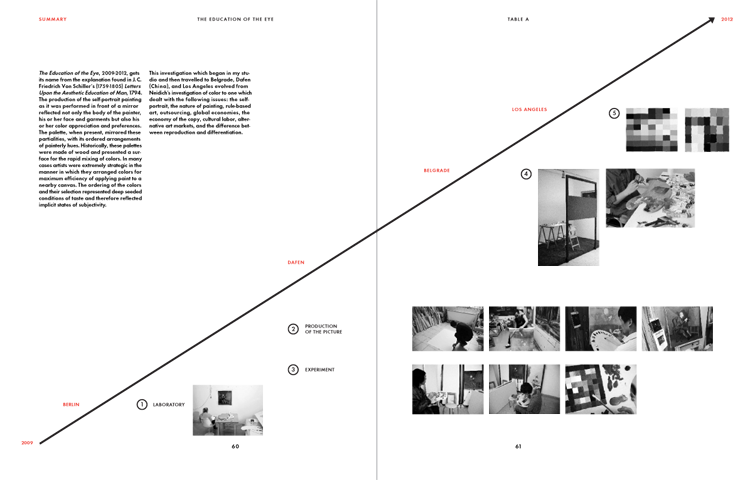
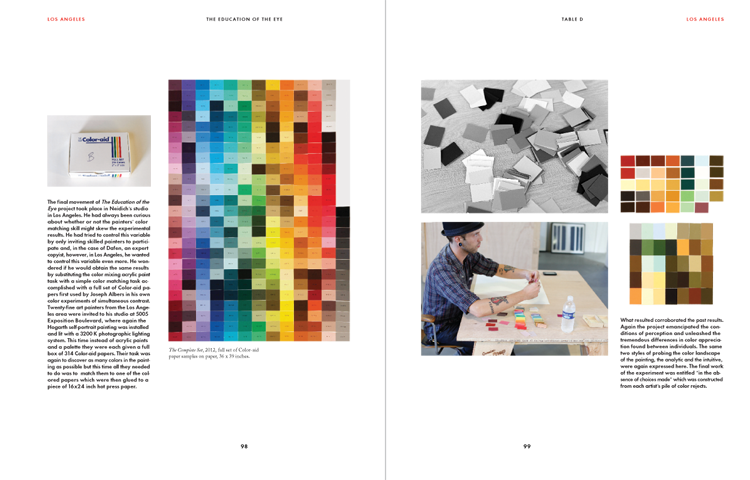
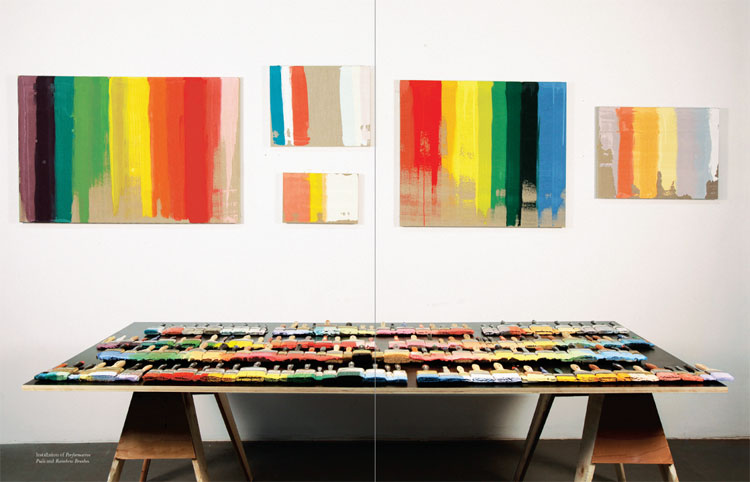
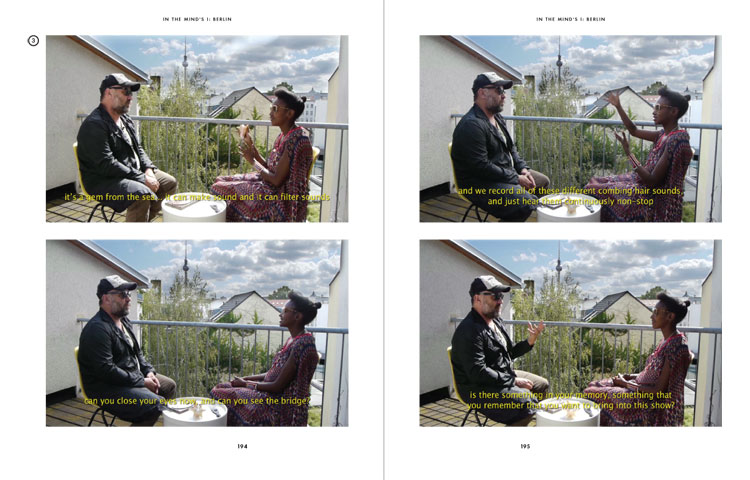
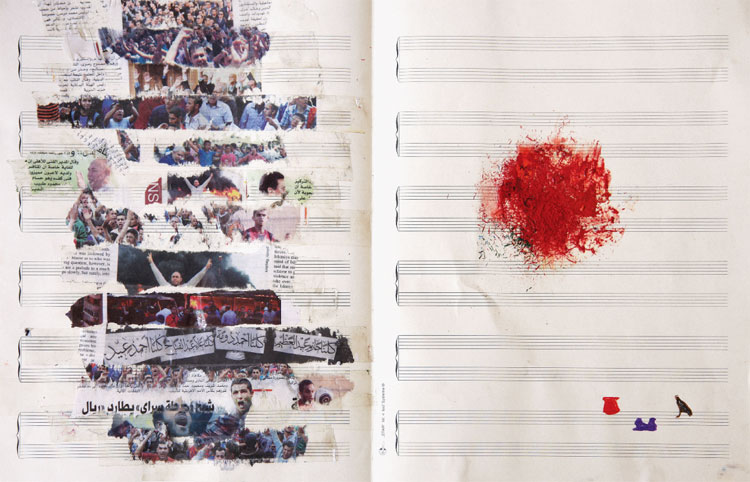
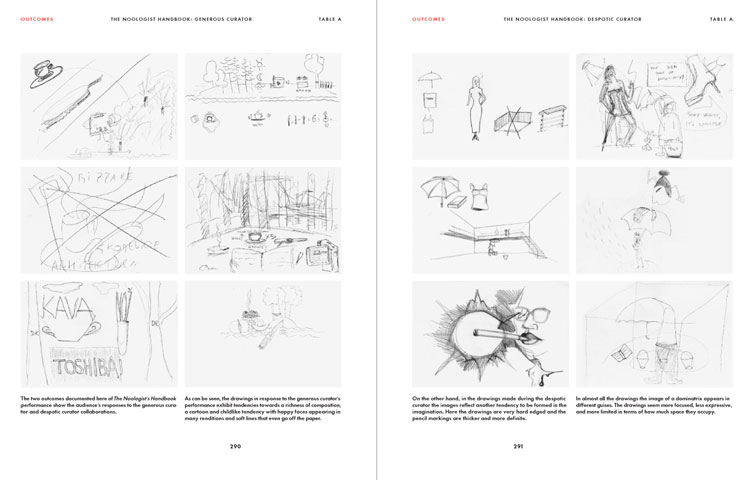
The Artist Residency in the 21st Century: Experiments in Cultural Potentiality and Contamination
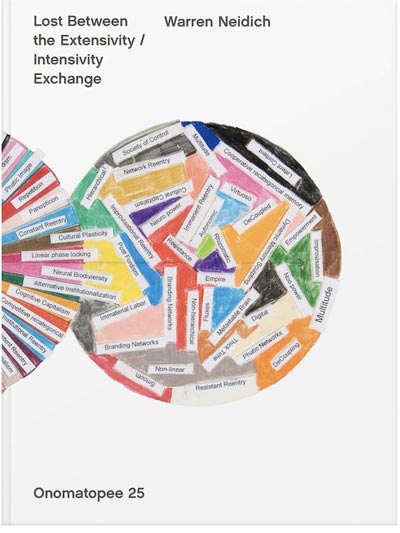
[su_spacer]
Introduction:
In the publication Lost Between the Extensivity-Intensivity Exchange published in 2008 by Onomatopee I brought forth the notion, through diagramatic and textual displays, that the inauguration of the 21st century could be described as a time of cultural torpor resulting from free floating anxiety, ambivalence, and wavering. The causes for this condition were many, but two stood out. First and foremost was the condition, suggested by the title, that of being lost in the ‘in-between zone’ of extensive and intensive labor and two evolving partially incommensurable world views, the local (tribal) and global (cosmopolitan) or the nation-state and the Earthling, merged. Superimposed upon this unstable frame of reference was, and still is, the disparity in epistemology encountered by the subject in the urban designed space of the city and its rural counterpart, although this difference is being quickly eroded away with the advent of fast connection internet and cheap hand-held browsing devices. Could the gridlock in the American Congress and David Cameron’s recent veto against the European Community be a result of this ensuing torpor, representing a clash between those of us who want to embrace a world view and those of us who want to recede into smaller more homogenous communities characteristic of the past? The question then needs to be reframed as: is this appropriate in today’s world that requires solutions to global issues like global warming, workers’ rights, and international terrorism? How, on one hand do we preserve local cultures and practices from global homogenization, while at the same time giving people all over the world the benefits of a global society like antibiotics, education for woman, and better sanitation – just to name a few. How do we soothe the needs of those who require familiarity and constancy with the requirements of those who want to move forward into cosmopolitanism or the idea of the ‘world citizen’?
[su_spacer]
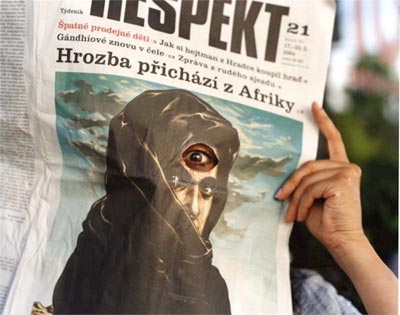
[su_spacer]
It is to these conditions that I would like to direct this essay in the hope of finding a way out of this languor by creating a more productive rhetoric, a trans-thinking vocabulary that does not heed the restrictions of a language rooted either in the humanities or the sciences but a mixture of the two. By trans-thinking I want to address a state of mind that is free floating and unencumbered by contrived barriers constructed in thought itself. As will be argued shortly, we are moving out of a condition of strict neoliberalism; a ‘cognitive turn’ has taken place. Ideas around the brain and mind are playing more and more of a role in investment strategy and political policy. Anyone regularly reading the New York Times will be impressed by the frequency and range of articles concerning mind and brain recently published. In the month of December alone, eleven articles have been published. These articles have ranged from advice on how exercise benefits the brain, to a critique of the limits of neuroscience when researching works of art to a bevy of articles concerning traumatic injuries to the head in ice hockey and soccer.
With the advent of the Internet and the explosion of images created by new media, issues of attention have also become more and more important and with it, maladies like Attention Deficit Disorder (ADD) due to the lack of the ability to focus. In our attention economy, in order to be an adequate consumer, you need your skills of attention to be at their peak. Lack of or easily disrupted attention in the 21st century is a disability that needs to be treated, and the pharmaceutical companies have been all too happy to invent a pharmaceutical menagerie to do so. ADD as well as Depression, according to Franco Berardi, are part and parcel of a whole host of disabilities particular to our time. (1) “The other side of the new economy is naturally the use of psycho-stimulant or anti-depressive substances…How many, among new economy operators, survive without Prozac, Zoloft or even cocaine…When economic competition is the dominant psychological imperative of the social consortium, we can be positive that the condition for mass depression will be produced. This is in fact happening under our eyes.” (2) It is here upon this playing field that a new ethics must be formed and refusing a lexicon of humanism or science just won’t do. Furthermore, the idea of free market unencumbered by political restrictions and decisions is an idea that has no merit today, for cognitive capitalism is focused on the new territory of the mind and brain, specifically its decision-making processes which skews any reference to free choice which neo-liberalism requires. Consumer neuroscience itself is a wild card in the hand of neo-liberalism. (3)These issues would seem to be a far cry from any discussion of artist residencies. But artist residency programs are, in fact, the perfect site in which to explore a variety of arguments concerning notions of tribalism vs. cosmopolitanism; extensive and intensive labor; the representation of the other in a world of mass immigration and transnationalism; and free choice in neo-liberalism. By their very nature artist residency programs are forms of temporary settlements in a worldwide nomadic movement of peoples and ideas, and as a result, they embody notions of cultural contamination and semiocapitalism. ‘The rise of post-Fordist modes of production, which I will call Semiocapitalism, takes the mind, language and creativity as its primary tools for the production of value.’ (4) Just as Gilles Deleuze had to create a different language to redefine Michel Foucault’s ideas of ‘the disciplinary society’ with his term the ‘society of control’, today we need to redefine other concepts, such as the artist-in-residence, to make them relevant in contemporary discourse. (5)
[su_spacer]
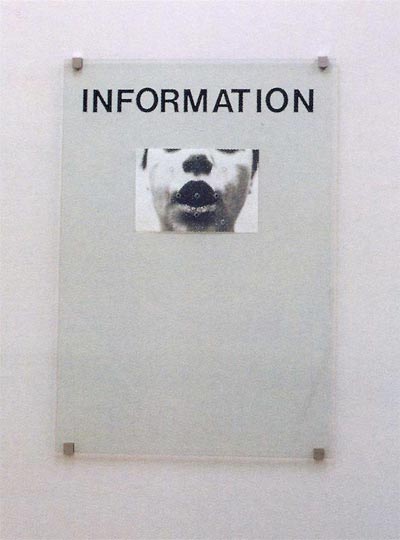
[su_spacer]
Each epoch, driven by novel sets of immaterial social, political, psychological, and spiritual relations, must devise new linguistic modifications to capture the essences of these mutated cultural environments, so too must we understand that the artist-inresidence operates in a very different discursive field today than it did, say, in the late 19th century and early 20th century when patrons of the arts created the Corporation of Yaddo. In our moment of a network transnational society, other cultures with other languages and other ideas become essential to the production of a complex point-of-view that has the potential to produce complex brains. I want to show how the artist-inresidence might play a role in this, first by concentrating the cultural capital of the other and secondly by activating this ‘otherness’ with the marginal and dissociative apparatuses of aesthetic production. I want to invoke it as a place where the power of art might flex its muscle.
The essay is divided up into a number of sections. Section 1, entitled The building without a program or how the physical condition of the space of the residency might be mutated, sketches out the potential of the residency as a cultural modifier acting to release its innate plasticity, potentiality in reserve. Utilizing the idea invented by Deleuze of the ‘body without organs’ as a metaphor, the residency is likened to a body that is no longer subjected to the despotism of the a priori genetic plan and is released to express another side of itself. For instance, surrealism and its instigator Freudian psychoanalysis were understood as tools in the elaboration of a new organization of the cultural landscape in early modernism. As such, this essay outlines the ways in which it, through the rules of its practices, mutated the complex contingencies of the aesthetic-cultural landscape of its time. Thus, it elicited alternative reactions from the brain’s attention centers, creating, in response, elaborate changes in the materiality of the neurobiological substrate that might be registered as memory architectures. These restructurings and neural modulations are then shown to have resonance for a model of sculpting of the phantasmagoric relations of the phantom limb and its phenomena of remapping. This plasticity metaphor, in this case cultural plasticity, is also utilized to understand architecture as a malleable space in which the regulation of social and intellectual flows that determine a residency, could be unlocked to affect and mold the surrounding cultural landscape in which it is embedded, with the potential to produce novel circuits in the brain/mind complex that make sense of it. Section 2 Cultural Pluripotentiality and Neuroplasticity: Parallelactic Continuity and Discontinuity further develops this idea. Cultural pluripotentiality refers to the relation of the dominant culture to the minority cultures that orbit around and through it. Healthy cultures are continually in flux. Metaphorically speaking they are a multiplicity of instructional and informational resonances vibrating at different frequencies that are tethered together in time as a meshwork or network phenomena. The sum total of these significations gives rise to that culture’s identity and quality. Whether you are looking at the micro-cultural context of the tribe, clan or nation-state, or molar condition of the transnational empire, one cultural referendum usually predominates. This dominant culture controls the center of the network of relations and is thus involved in dominating that portion of the network’s activity, as all of its resonances eventually move through the center. At the margins this is less true. Although the dominant culture controls the character, principles and general intelligence of a particular tribe, nation state or transnational entity under moments of destabilization due to war, natural disasters, economic downfall or extreme paradigm shift, the network’s disposition might change. In this moment, the marginal culture might have the chance to express itself more intensely. For instance, these moments of destabilization might de-center the network making what was peripheral and marginal more central. I think this is what happened after Catherine David’s, Documenta X and Okwui Enwezor’s Documenta XI as together, one could argue, they were partly responsible for the cultural turn in art history. This process of destabilization and restabilization as something else is essential for the concept of cultural pluripotentiality as a form of cultural plasticity that constitutes a culture resiliency in times of change by allowing for the establishment of different intensities. In this moment of cognitive capitalism – delineated by immaterial labor and new forms of distributed general and machinic intelligence – the redistribution of the network’s capacity and the rearrangement of its immanent nodal identity is more important than ever. This cultural pluripotentiality is coupled to the conditions of the brain’s neural plasticity. As such, this cultural-neurobiologic plasticity complex, as I would like to call it, provides a mechanism for continued natural selection and survival.
Section 3, entitled Neurobiopolitics: The Mind’s Eye as a Place of Political and Social Contention, explores the notion of biopolitics of the mind. Biopower, as defined by Michel Foucault, constitutes the methods through which sovereignty constitutes docile and productive bodies and organizes life through the modulations of affect, for example, pleasure. (6) In cognitive capitalism, the brain and mind are the focus of sovereignty’s desire to normalize the subject’s gnostic potential in order to produce a ‘like minded’ people. This constitutes one of the conditions of neurobiopolitics. When neurobiopolitics focuses specifically on the neural plastic potential of the brain especially in the frontal lobes where it is most abundant, the term ‘neuropower’ is used. In tertiary economies it has been argued by the likes of Poalo Virno that the virtuouso performance leaves no trace. (7) It does not produce any material product. Through my project The Noologist’s Handbook (2008-2011), I argue that in late capitalism a trace is, in fact, left in the form of complex memory structures in the mind’s eye. Secondly I argue that this space of the mind’s eye is one of political contention and political determination. I then explain how a ‘residency without walls’ adapts to the rubric of the early 21st century and embraces this idea of the immaterialization of architecture as a mechanism by which to unhinge regimes of oppression that attempt to debilitate it as a cultural and neurobiological modifier. In Section 4, The Cultural Capitalism/Cognitive Capitalism Ratio and its Relation to Cerebral Complexity, I define my concept of the Cultural Capitalism / Cognitive Capitalism Ratio and tether it to cultural complexity. As opposed to the usual definition of cultural capitalism proposed by Pierre Bourdieu, in which cultural capital refers to those factors that include the cultural habits and dispositions inherited from the family and which are fundamentally important for a child’s success in school and therefore society, I put forth an alternative position in which cultural capital is seen as the degree to which artistic practices create other resistant possibilities for the mind by neural modulation. (8) I would like to expand Bourdieu’s position because it is not broad enough and does little to examine the emancipating aspects of cultural capital. I am extending it to include the idea that these same resources form the fundamental epistemological context that later inform the practices of those children that become artists and architects. This specialized knowledge becomes the fundamental platform though which they produce novel intellectual products and discourses, especially in the cognitive regime, to interact with those conditions of cognitive capitalism in order to mutate them. Beyond the definitions of cognitive capital currently circulating in the public’s eye as espoused by a group of Italian political philosophers such as Maurizio Lazzarato, Matteo Pasquinelli, Titziana Terranova and Christian Marrazzi, I would like to add the following: cognitive capitalism refers to a recent accentuation of an ongoing historical process in which the territory of the mind and brain is the focus of capital investment. Most importantly, cognitive capital organizes its apparatuses of power upon the brain’s neuroplasticity in the hope of producing a future passive and normalized human being. This, as we saw above, is called neuropower and will be elucidated later. I then proceed to explain what I call the ‘Cultural Capital/Cognitive Capital Ratio’, where a high ratio delineates an open society whilst a small value connotes a repressive one. In the following section called Further Elucidation of the Cultural Capital / Cognitive Capital Ratio and Neuromodulation, I investigate how this ratio could serve as indices for predicting how the neuroplasticity of the neural tissue is sculpted and modulated within specific political cultural environments. After a detailed discussion of neuroplasticity and its relation to epigenesis, I go on to discuss its link to cultural production. In this respect I tether this ratio to the concept of complexity both in culture and in the brain. The coupling of cultural complexity to what is referred to as degeneracy forms the final discussion in this section. Cultural complex environments that embrace high levels of cultural capital produce degenerate networks in the brain that give that brain a greater capacity to think creatively and improvisationally.
Excerpt
Comments On “Unstable Moments of Reconsideration, Reconsideration”
by: Warren Neidich
Published in: Reprise #1, Ed Mathieu Copeland, 2011, pps: 10-17.
Comments On “Unstable Moments of Reconsideration, Reconsideration”
“I am proposing the notion that we are here in the presence of something like a mutation in built space itself. My implication is that we ourselves, the human subjects who happen into this new space, have not kept pace with that evolution: there has been a mutation in the object unaccompanied as yet by any equivalent mutation in the subject. We do not yet possess the perceptual equipment to match this new hyperspace, as I will call it, in part because our perceptual habits were formed in that older kind of space I have called the space of high modernism…The newer architecture therefore - like other cultural products I have evoked in the proceeding remarks - stands as something like an imperative to grow new organs, to expand our sensorium”.
Postmodernism, or, The Cultural Logic of Late Capitalism, Fredric Jameson.
The question that Jameson poses in the above quotation is the question I would like to take up in reference to the question of curating as an act of cross-generational reiteration. I would like to consider anew the impulse to re-enact the archive in the present moment of our event culture, where performance and labor are quickly becoming indistinguishable. I want to understand this in reference to ontogeny; as a culturally inflected development of the human organism. Finally I want to look at how destructive impulses, as they are utilized in art and curatorial practices, create new languages for those practices and, as a result, the imagination. The power of art will ultimately be understood as neuro-modulatory.
A.
«The diagram is indeed a chaos, a catastrophe, but it is also a germ of order or rhythm. It is a violent chaos in relation to the figurative givens, but it is a germ of rhythm in relation to the new order of the painting. As Bacon says, it “unlocks areas of sensation”.»
Francis Bacon: The Logic of Sensation, Gilles Deleuze
«The diagram or abstract machine is the map of relations between forces, a map of destiny, or intensity, which proceeds by primary non-localizable relation and at every moment passes through every point, or rather in every relation from one point to another.»
Foucault, Gilles Deleuze
What has happened since 1964, when Study for an Exhibition of Violence in Contemporary Art was first curated by Roland Penrose, and today in 2011 as it is ‘rendered’ again, first at the David Roberts Art Foundation, London and now reassembled again as Studies For a Catalogue - A Study for an exhibition of Violence in Contemporary Art (Reprise 1964/2011) at Flat Time House, London? For one thing, the curator and many of the artists in the new publication have been born. Not an insignificant fact. A new generation of subjects has has been produced, no longer bound to the logics of modernism, but who have instead formed their habits of perception in the fluid, dynamic, non-linear, networked world of the post-modern, or whatever you want to call it. A new generation has emerged who have substituted the chart and the list, with its hierarchical structure, for the diagram, in which layers of intensity in flux are superimposed; whose perceptual habits, continuing with reference to Jameson’s above quote, have been reconfigured through active engagement and the event rather than passivity and stasis.
Plastic sociological, political, spiritual, economic and historical relations, as they interact with and are embodied by these novel cultural equivalences are spat out as architecture, painting, sculpture, installation and performance. In the end these changes affect the visual, auditory, haptic and kinesthetic topography of the cultural habitus, its distributions and, as a result, its subjectivities, especially the brains and minds, which operate inside them.
In this expanded field of distributed networks, time and space are reconfigured, reappraised and reconnected according to evolving, variable intensities, resulting in hubs and energy sinks that couple to our reflection and attention. These then produce the urgency alluded to by Jameson; changes that create the imperative to grow new organs of perception and provide the pressures, according to present day neuroscience, to sculpt the neurobiological substrate and architecture, giving it new potential to perceive and cognate the formally sublime space of post-modernism. How this might happen neurobiologically is beyond the scope of this essay, but for those interested I refer them to my recent essay «From Noopower to Neuropower: How Mind Becomes Matter» contained in the volume Cognitive Architecture: From Biopolitics to Noo-Politics, edited by myself and Deborah Hauptmann, 010 Press, Rotterdam, 2011.
B.
Space, its topographies and topologies, holds inside itself real material conditions but also possibilities. In cultural terms its ability to be described at any time is a product of known and unknown factors that together contribute to its inherent pluri-potentiality. The word pluri-potentiality, as its roots imply, signifies many or several meanings or possibilities that still remain latent, awaiting the proper set of cultural circumstances in which to become real or instantiated. I am using this expression to delineate the conditions of space, both expressed and unexpressed, that are articulated by a particular context and that are coupled to similar but different relations existing inside the subject who operates in that space. The brain, by its virtue to adapt to constantly evolving habitats, is also pluri-potent and its power resides in its ability to change to fit the social, political, economic, historical and cultural conditions it is born into and in which it must operate.
The brain of humans, especially the outer shell called the cerebral cortex, contains an excess of pluri-potentiality at birth referred to as neuroplasticity. The brain has the potential, for instance, to learn any of the 6,700 languages presently existing on this earth, although each of us learns just a few. But the potential is there, especially for the child, to learn any of them. Concepts themselves are pluri-potent, responding to the mutating linguistic and cultural milieu over time, resulting in new surfaces presented to our understanding. Even the white cube, with its anonymity and starkness, holds infinite possibilities to become. Many artistic interventions have attacked its surface and attempted to destroy it in order to reconfigure it and, as a result, provide new surfaces, some of them rough and contorted, in order to make new statements about the condition of art and its container. Liz Larner’s, Corner Basher, 1988 performed at 303 Gallery in New York comes to mind.
C.
The history of exhibitions is a history of the traces of that mind in a state of becoming. Is this, in fact, the story of A Study for an Exhibition of Violence in Contemporary Art, an exhibition that has been reconstituted at different times and in different spaces, continually shifting its presentation to fit its specific context? That history is reflected as cultural memory in relation to the facts of this roving nomadic exhibition: the ICA, David Roberts Art Foundation and Flat Time House present different discursive contexts and problematics through which the exhibition can be redefined. First, at the ICA, the exhibition was categorized into different frames of reference using panels, like one might do for a card catalogue in a library. Linearly distributed, they followed the course of the ICA’ s interior architecture and they were each labeled, from one to thirty. One might have experienced this exhibition as one might read a book, page by page. As each page is turned, new content unveils itself to the eyes, body and mind, arranged as a narrative displaying different categories of violence and destruction.
For instance, Panel 1 concerns itself with introductory remarks and is illustrated by reproductions of Van Gogh’s Willows at Sunset, 1888, and Pablo Picasso’s Woman and Dead Child, 1937. (Few actual works of art were included in the original installation at the ICA, most were represented in photographic reproduction. These works of art illustrated the categories used. I will not recite the full list of works, as I am more interested in the arrangement of topics.) Panel 2 sets the stage for ‘Violence Observed: Nature’ which is divided into Panel 2, ‘Landscape’, and Panel 3, ‘Animals’. Panel 4 is the beginning of ‘Violence Observed: Human Behavior’ and is subcategorized into ‘Sex’ and ‘Sport’. The next panels continue this category: Panel 5, ‘War’, Panel 6, ‘Fighting’, ‘Murder’ and ‘Torture’, Panel 7, ‘Suicide’, ‘Hysteria’ and ‘Madness’, Panel 8, ‘Anguish’ and ‘Anger’ and Panel 9, ‘Birth’ and ‘Death’. At Panel 10 the exhibition takes another turn with ‘Violence Imagined: Symbolic Violence’. It is made up of ‘Religion’ and ‘Myth’ and continued in Panel 11 with more about myth. Panels 12, 13 and 14 follow with the categories of ‘Dreams’, ‘Sex’, ‘Obsessions’ and ‘Signs’. At Panel 15 another abrupt switch is made under the grand category ‘Creative Violence: New Styles- New Conceptions’. These panels read as a history of art in the twentieth century. Panel 15, ‘Colour: Fauves’, Panel 16, ‘Significant Distortion’, ‘Expressionism’, Panel 17, ‘Movement: Futurism’ and, ‘Optical’, and finally Panel 18 and 19, ‘Irrational: Surrealism’ and Panel 20, ‘Exuberance’. Panel 21 introduces another category ‘Violence as a Weapon’ with the subcategory ‘Anti-society’ followed by Panel 22, ‘Anti- Religion’, Panel 23, ‘Anti-Art Dada’, Panel 24, ‘Anti-War’, Panel 25, ‘Anarchy’, Panel 26, ‘Polemical’, and finally Panel 27 ‘Irony and Humour’. ‘Direct Expression’ is the final major heading and includes Panel 28, 29 and 30 under the subcategory, ‘Action’.
The works of art that are subsumed by these categories act as forms of proof for the suppositions provided by their respective panel headings. They are rigorously incarcerated by the discursive logistics of the overall plan that controls their spatial coordinates and restricts their pluri-potentiality. They are physically contained by their designated panel assignments, unable to jump beyond their physical and metaphysical confines into another category or to fill in at another location. Of course, each painting could be used to reference many different topics, but in this arrangement they are allowed just one. One is reminded here of the conditions of Michel Foucault’s term ‘disciplinary society’ in which architecture itself becomes biopolitical. The installation affects the minds that regard it, instituting hierarchies with which to form basic understandings.
D.
My purpose here is not to recount the content of the catalogue of the exhibition, you can go online for that, but rather to make two important points that relate to my original conjecture. That, in fact, the mind formed inside modernism finds the post-modern space sublime. The corollary being that the mind formed in Post-Modernism is characterized by habits of perception and cognition that refer to alternate forms of neurobiological distributions which provide it with the ability to understand these sublime spaces. These alternative, materialized dispositions also have the potential to create new forms of cultural materialization. I am arguing that the brain/mind of Mathieu Copeland is, beyond its individual character, sculpted according to the logics of his generation. He is a standin for his generation, who share common neurobiological materializations in the form of memories, coded and summated as the activity of millions of synaptic switchings. As such, he is an agent for the production of cultural forms that instantiate those generational proclivities, for example, the post-modern. I argue that his brain/mind is sculpted very differently than that of his predecessor, Roland Penrose, whose brain was sculpted in the space and time conditions of modernism; indeed, that the different epochal, culturally derived habits of perception and cognition lead to very different installation formats, produced for very different generational audiences accustomed to varying readings of space and time.
The mind of Roland Penrose that decided the order of the original content of the ICA exhibition and administered its design, was attempting to make sense of a bevy of existing original materials, randomly distributed over time and topics, that dealt in a haphazard fashion with the idea of destruction and violence in art. I quote from his preface from the show, “Violence is an elemental force which can not be neglected and the arts have traditionally claimed their share of the emotional excitement it provides. Martyrs, battles, catastrophes, murders and rapes have been the motif for colouring many masterpieces with blood. It flows as freely in the ritualism of Italian Primitives as in the realism of Goya, Gericault and Delacroix.» By using an outline or chapter heading form of classification he was hoping to produce a taxonomy, or natural history, of violence in art, to use an expression found in Michel Foucault’s The Order of Things, in hopes of removing the hitherto obfuscation that surrounded the topic. The cataloguing of forms of violent expression as they appear in the arts was the first impulse to arrange this information. It was followed by a second-order rearrangement, within the catalogue, with its different rules of formatting. (Don’t forget there were no InDesign programs at this time.) The secondorder rearrangement, or meta-arrangement, I would suggest is a second order cataloguing or re-cataloguing. This manifestation, as it existed formally as text choreographed and styled on printed page, was entombed in the ICA archive at the Tate in London until the curator plucked it from its shelf and gave it mouth-to-mouth resuscitation.
The act of exhuming this content, buried deep and for so long, allows us to understand the power of this original, classical model for creativity; one that lit the way for the Enlightenment, but which now seems antiquated and anachronistic. Even within its hierarchical constraints, the possibility emerges for ‘Creative Violence’ to produce ‘New Styles - New Conceptions’. It is here that violence acts as a generative force, breaking up that which is known and understood into a thousand pieces, in order to be reassembled in a new construction of the known in order to create a new territory of the unknown. This is a continuous cyclical phenomenon. Violence, and its cohort destruction, punch holes in institutional logics in order to create new territories for the imagination to operate within. Are these methodologies of destruction a key to understanding the formal adaptations necessary to make the contents of the catalogue real again? Will violent curatorial methodologies be necessary to exhume the catalogue and re-enact it in a revitalized threedimensional space, inhabited not by dust particles and the faintest of light, but by living, breathing human beings rummaging through scopic regimes and haptic kinesthetic logistics of the 21st century? A public used to watching fast editing on Music Television Videos, reverse action replays on sports television, and distressed photographs that portray partial body parts with their need for assumptive pattern recognition. A new public and viewership privy to new forms of viewing, who witness the simulacra of the work deposited anew, almost sixty years later, in the pluri-potential white cube structure of the David Roberts Art Foundation.
E.
But the story does not end here. For, as a witness of the exhibition installation downstairs at the David Roberts Art Foundation and a futuristic voyeur of the installation at Flat Time House, what becomes quite apparent is that the modulated context has pressured the installation to emerge as something quite different.
When one reviews the documentation from the David Roberts Art Foundation, what is evident is that the curator has thrown off his cloak as a disinterested observer attempting to clear away the detritus of unmeaning in order to rehabilitate a common understanding. Instead, following in the footsteps of the great Harald Szeemann, he has become an artist himself. Or, should I say, he has gone native. He has contaminated the original presentation at the ICA by reneging on its original cataloguing and refutes the linear, extensive, arboreal logic of his predecessor(s), instead reinstituting the logic of the salon as diagram or rhizome. Images are assembled as they might be on an i-photo library source page or, even better yet, a Final Cut Pro browser window displaying its clips.
At the David Roberts Art Foundation there was a nod to the original catalogue, but it was almost invisible, especially for those not privy to the original installation format. The topic headings were still there but were less obvious, not inscribing an entire panel but inserted into a stream of similarly processed information. Photocopies hung on the wall, one subdivision followed immediately by the next, blurring the boundaries between each. What was more apparent and attention grabbing were the incongruities created by the original works, borrowed from the David Roberts Collection and hung on the wall, which stuck out like gorgeous sore thumbs. Instead of flat photocopies these works were uncharacteristically large and either framed or resting on pedestals, causing the eye to change its course rather spastically. They made the whole installation unbalanced and odd. They broke up the original, ordered rhythms and created jumping-off points for the eye, which was averted from its normal path, as well as creating junctions for the dissemination of information between now coalescing information streams.
Take for instance the framed Lichtenstein work entitled Brushstroke, 1965, which butted against both Bridget Riley’s Fragment 1, 1965, on its left and a photocopy of Ben Shawn’s Sacco and Venzetti, 1931-1932, on its right. The Lichtenstein stretches from panel 20, ‘Exuberance’ where the work resides, all the way to Panel 17, ‘Optical’, where the Riley sustains itself, and finally connects the whole ‘inter-panel complex’ to Panel 21 where the Shawn lays waiting, ready to proclaim ‘Violence’. Of note is that the Bridget Riley was a substitution for ‘Disfigured Circle’, 1965, which was not in the collection, whilst Fragment 1, 1965, was. This kind of substitution occurred, according to Copeland, 10-15 times. Inter-panel complexes dot the surface of the wall. They are the essential entity that makes inter-panel readings and communications possible. They are the dispositifs of the exhibition and demand a post-modern reading, with its call for distributed information and networking rather than that which was originally allowed for under the strict rationality of high modernism. The display set up here was somewhat analogous to words and images displayed on computer screens with hypertext that allow the viewer to jump fields of attention from one webpage to another. Hubs of interest, where intense flows of information congregate and upon which the observers’ eyes rest in order to resample continuities based on personal biases rather then institutional prerogatives. This microdistribution of the sensible, the arrangement of the images in the gallery and the political conditions that this aesthetic presentation implies, has been mutated according to the logics of the information society with its web designs, computer games, internet and online discussions. (I am not implying by this reference to technology that technology is the most important force for near-modulation. I am actually saying that the changing conditions of the neurobiological architecture give the mind new forms of mechanic intelligence with which to think and that, in fact, new technologies are the result of that imaginative thinking. New technologies are produced in order to give the mind a new means to reflect upon itself in order for it to understand the new evolving self-condition.) The installation of the works mimicked these conditions, giving them a renewed freshness, at the same time alluding to the revivified productive labor of the cultural worker whose mind has been selected by these new contingencies. The apparatus of the exhibition is the mimic of the conditions of the epistemological reframings caused by modulated neurobiological apparatus and architectures of the brain molded in the information age.
F.
Space is defined not only by its material basis, its walls, windows and ceilings, but as well by the discussions that ensue about it. Buildings and the spaces they hold, as Patrick Schumacher has intoned, have become discursive events. As such, buildings become part of linguistic performances. In tertiary economies, according to Paolo Virno in The Grammar of the Multitude, in which performance and labor become indistinguishable, immaterial linguistic events that leave no traces are the new contingencies for the formation of capital. ‘Gossip networking sites’ like Facebook attest to this. I am arguing however that these new linguistic forms do have a material presence; that they inscribe messages of sorts upon the wet, mutable pluri-potentiality of the brains and minds of the audience, gathered to view the performance. (http://www.artbrain.org/) As we move towards Neo Global Cognitive Capitalism with new technologies at hand, like software agents and social network sites, like never before it is the mind and brain which constitute the new territory for dominating strategies of international capitalism. This power to inscribe upon the masses perceptual and cognitive habits is not new. Benjamin was hip to these possibilities and in his Work of Art essay he describes how works of art in the hands of the Third Reich were used to produce an ‘organic community’ (the German People or nation) as a work of art itself.
The exhibition, like the architecture, visual art and film mentioned above, is also a mirror to self-reflect upon the conditions of the changing relations of the epochal generationally sculpted neurobiological mindedness. This in itself provides for the potential for political expression. Most importantly, in the context of this text, the act of exhibition production is always in one way or another a political act.
G.
“This is why this return of what is never simply itself. What returns is the movement through which something other is inscribed within the same, which, now no longer then the same, names what is always other than itself.” Walter Benjamin, Gesammelte Schriften. Ed. Rolf Tiedemann and Hermann Schweppenhauser.
The history of curating is a history of the reading of the mutating conditions of the culturally constructed zeitgeist as it is manifest in trends of artistic production. Artists are the selfdescribed agents of that. Curators reading artistic works in the way that critics read texts find emerging patterns in the plethora of artistic bricolage that clutters the zones of cultural production. They, as cultural workers, come to the cultural field with different forms of procedures, apparatus and discourses to read the ensuing mutations of that landscape. They use artists’ works as their palette, constructing a meta-language through which to understand the new emerging patterns. (Patterns that, like ready-mades, can emerge from the noise of the uncommon, disordered and ensuing destruction of information itself.) They decode and disseminate those changes to the culture at large.
The recent resurgence of re-enactment as a conceptual tool, most readily illustrated by Marina Abramovic in her exhibition The Artist is Present, is now spilling over into the field of curating. Interest in historical ready-mades as a means to understand our own contemporary culture has sent artist and curator alike scurrying into the archive to mine the rich fertility of the past. Sometimes, as is the case here, to find original books and catalogues from which to build contemporary productions from memories of exhibitions as they are documented in words and pictures. The reasons for this interest are multitudinous. From the condition of the eternal return itself, to the need to reread works of the past with a contemporary perspective post 9/11 and internet, to the unveiling of the pluri-potential nature of these early works, which contain inside themselves multiple readings not yet interpreted and that require contemporary subjects who have, like Jameson intimated, grown new organs of perception to untangle them.
Resistance is Futile/Resistance is Fertile 2020
Resistance is Futile/Resistance is Fertile 2020
What are the conditions for radical and/or revolutionary thought and praxis in the 2010s?
What do you fear from the coming decade?
Resistance is Futile/Resistance is Fertile 2020
Is Resistance Futile? In this moment of Neo Liberal Global Capitalism powerful corporate consortiums and NGOs constitute the instrumental logic of what is referred to these days as Cognitive Capitalism. I would like to expand the definition of Cognitive Capitalism beyond its capacity as the accumulation of assets related to the information economy as it pertains to intellectual rights, the production of soft and hardware for computer programs and surfing the net and its privatization and therefore its restriction of the intellectual commons. I would also like it to include all forms of enterprise that profit from the conditions of thought and its administration and would suggest that it is the future territory that capitalism will attempt to conquer or should I say colonize. Drug companies produce and will continue to make new and ever more powerful mind altering drugs some of which affect attention (Adderall) and memory (Phenserine). Co-opted post-production companies continue to create more and more powerful phatic images, as Paul Virilio has described them, with adobe photoshop and aftereffects that compete with each other for subjective attention and in total constitute fields of meta-attention on billboards, TV screens, computer and Video Walls that adorn designed space that most of us experience in the places we now live. Computer games and virtual simulation environments have proved effective in learning the real world skills used on the battlefield (See Military Simulation and Serious Games by Roger D. Smith, Model Benders Press, 2009.) More recently Neuro-imaging techniques have become an essential new form of marketing called Neuro Marketing and will continue to be so, where the patterns of neural excitation become registers for desire driven commodified decision-making processes used by product designers/makers and advertising firms alike. (Editorial, “A Manifesto for Neuromarketing Science,” Journal of Consumer Behavior, Volume, 7, Issue, 4-5, pages 263-271.) Finally through such official proclamations such as the Bologna Declaration, the university system itself more then ever is under siege as it is now administered to create curriculums that refine what knowledge can be taught and to what end. Together these form the new conditions of instrumental logic in the age of information. When furthermore this information is sculpted to concur with preexisting and learned conditions of brain and mind, for instance the way that synchronized dynamic functional connectivity elicits attention and as a result memory I refer to it as Cognitive Ergonomics. (Wolf Singer, Binding by Synchrony, 2007, Scholarpedia)
Cognitive Ergonomics is an insidious apparatus of Cognitive Capitalism and has global effect. (Here I mean both in the sense of Global Networks in the brain and Global Networks of the Empire.) Recently Neuroscience has been exploring the very decision making processes used in future determinations by focusing its attention of the workings of the frontal lobe. This has created a switch from its past interest in what was called bottom-up processing to what is known as top-down processing. Instead of organizing how sensations are organized into larger more abstract bundles and concepts the focus today is rather on abstract thinking itself that indirectly affects how sensations emanating from the world are routed in the circuits of the brain. (Engel, A.K. et al., “Dynamic Predictions: Oscillations and Synchrony in Top-Down Processing,” in Nature Reviews Neuroscience, October, 2001, page 704.) This as we will see is a condition of Neuropower to be explained a little later. Cognitive Ergonomics is now the conditions of advanced information societies in which the information produced is designed to silently and invisibly co-opt the energy distributions of the brain to affect thought itself. Neo-liberal Cognitive Capitalism directs its energies towards the production of information that in the end is cognitively ergonomic and thus with increasing effectiveness enters the hierarchical and non-hierarchical conditions of mindedness more efficiently. As such it creates the new conditions of the distribution of sensibility or should we call it the distribution of insensibility because the information networks themselves are sublime. No new laws need to be passed and less and less government is needed as the machinic intelligence of this constituted general intelligence does it all. Resistance is Futile as the Borg said.
But maybe Resistance is Fertile! Sure Artists and Art professionals are at times instrumentalized themselves by the power of neoliberal global capitalism and who is to blame them. In fact the system pushes artists to brand themselves in order to be constituted not as a human being but instead a calculated auratic impulse weightlessly distributed according the non-linear logics of the media networks. The fame machine reinvented and elaborated by Warhol, the global stardom of the art fair insinuated as one is in the international gossip networks of famous collectors in the VIP lounges of the Basel Art Fair, the chance to appear on the cover of global art and fashion magazines such as Artforum and Vanity Fair are incredibly intoxicating. As such the financial rewards can be great for a select few. Cognitive ergonomics and cognitive capitalism, as I am introducing the concept here, makes no distinctions between artist and non-artist. But the power of art in its most utopian sense is a powerful agent of change when understood and embraced by artists and the community that they constitute.
How might this be? We are all born with a pluripotential brain constituted as it is by a widely varying population of nervous elements, called neurons which is constituted by its axons, dendritic spines and synapses. These neurons and the connections they form differ from each other in the amount and type of energy as information that they can absorb and elaborate. The degree to which this energy effects neural efficiency at the synaptic junction will effect the sustainability of that connection or the network it constitutes and affects the degree to which for instance the dendritic spine(s), can survive, propagate and form alliances. The neuron with its axons and dendrites is a form of matter of the brain and that matter is transformed in different ways by, for instance, different spatial and temporal frameworks some of which culture plays a role in producing. (Quartz, S. & Sejnowski, T.J. (1997). The neural basis of cognitive development: A constructivist manifesto. Behavioral and Brain Sciences 20 (4): 537-596.)
Different cultural dispositions organize, for instance, the visual cultural field in such a way that different neurons and assemblages of neurons are differentially called out- to which has implications within limits for what forms of neural architectures can be produced. This is what since 1997 I have called the "Cultured Brain Model". The variation of the population of neurons, the degree to which they can be modified by either internal or external inputs and their resultant pattern of connectivity is referred to as its neural plasticity. It is towards this neural plasticity that the energies of sovereignty are directed. The sculpting of this neural plasticity or neural potential is the aim of the administration of the subject in the quest to form an obedient people. I call this "Neuropower" and understand this to be a recent manifestation of biopower coming as it does on the heals of such ideas such as the disciplinary society (Foucault), the society of control (Deleuze) and Noo-politics (Lazzarato). Extending them beyond their focus upon the administration of man in the present to that of the production of the future man or woman. It is also towards and upon that variation that cultural capital, here I mean in the sense of Bordieu, as a cultural/environmental modifier produces subjects whose Eye has been educated in very special other ways. Ways that if nurtured allow them to look at and make things that defy that which is constituted by the instrumental logic.
What effect might this have? Artists using their own histories, apparatus, processes, materials, logics produce works of art and non-art that populate the visual auditory and kinesthetic landscape and thereby mutate the conditions of the distribution of the sensible producing what I have referred to before as the Redistribution of the Sensible. This constitutes the flip side of Neuropower as artists create images static and dynamic that compete effectively for the minds attention and therefore have power to produce a population of neural connections that along side those already elicited by the powers of instrumentalization constitute the image of thought. They are in fact part of the history of the production of the subject. The ratiomatic relationship between the amount of cultural and cognitive capital affective at any particular moment and their concomitant power to produce a variety of epigenetically contrived neural architectures is the essence of the history of the thought image. What a difference it is to walk through a gridded city constituted as it does by a mathematical and preformed logic then that based on the conditions of a city built and designed according to the illogic’s of Situationism with its dérive, chance encounters and network of psycho-geography. What effect does living in such a city have on the growing child whose brain and mind are open and responsive during what are referred to as critical periods for learning? Do different forms of neural architecture emerge as a response to this wide variety of conditions that have the potential for different thoughts,that respond to different networks of attention and different immanent gestalts that move like the wind through distributions of sensibility. As such does this artist’s brain have the potential to create sublime objects, corrupted and abnormal forms of movement, unthinkable thoughts that are beyond the general intelligence of the police to monitor. That, like the scandal of Marcel Duchamp’s work of 1917, a urinal signed R. Mutt or the apathy experienced in the context of the first presentation of The Barcelona Pavillion, 1929, of Mies Van der Rohe, remain beyond the radar of the self-policing conditions of, in these cases, Modernism until the seismic shifts they created that originally presented themselves as rumbles became earthquakes in the realm of the sensible and produced mutations in the distribution of time and space. Earthquakes that I might add create what Carl Schmitt would describe as "States of Emergency". For the new State of Emergency in the eyes of the sovereignty are constituted by changes in the state of the normalizing distribution of sensibility and the apparatuses that tether that distribution together in order to produce a people who share a common Neuro-architectonics constituted by the experience of a controlled homogeneous world picture/cinema. The state of emergency concerns the future generation whose pluripotential brain with all its variability might be sculpted by very different conditions of the distribution brought about through the magic of the sublime object(s), idea(s), movement(s) produced by those who have cultural capital. This is the power of art! Because it is this State of Emergency that in fact elicits the State of Exception when government itself goes into a seizure that suspends itself. The history of art and political change can, therefore can be seen as a generational and epochal production of a succession of states of emergency and the response to them.
Neuropower
by: Warren Neidich
Published in: Atlántica Magazine of Art and Thought #48-49, 2009
Neuropower in Atlantica
Diagrams of the Mind
Latin diagramma, figure, from Greek, a figure
worked out by lines, plan, from diagraphein,
to mark out, delineate : dia-, dia- + graphein,
to write; see gerbh- in Indo-European roots.
(The American Heritage Dictionary of the English Language)
I.
In the landscape of contemporary artistic and critical operations, by which we can understand those practices that seem increasingly difficult to separate from theoretical work, as well as those theories that refuse the state of merely abstract reflections on already existing practices, the diagram—a writing or drawing “dia,” ”through,” a schema that is worked out or traversed by lines that are not only physical but also immaterial, lines of flight as well as lines that constitute dead ends and machines of capture—has become an eminently useful concept. From visual arts to architecture, from philosophy to theories of organization, the diagram has escaped the condition of something merely graphic, a representation of a set of relations established elsewhere, and has become more akin to an instrument of thinking, or even something that engenders thought itself.1 In Warren Neidich’s “Diagrammatic drawings” we find a distinct take on this theme, a way to use the diagrammatic mode of thinking in order to connect areas of research, discourse, and practice, which in the contemporary division of labor between on the one hand the sciences, on the other hand the humanities and the arts, seem destined to either remain deaf to each other, or produce the fantasy of asymmetrical reductions and appropriations. Bringing together concepts from neurology and the life sciences, political philosophy and aesthetic theory, theories of immaterial labor and post-Fordist production, Neidich creates a maze of concepts and connections that may at first sight seem bewildering, and even more so since he explores them not just as theoretical concepts, each located within their particular sphere, but as physical and corporeal zones that we can and indeed do inhabit, and that we traverse in the most minute of our everyday activities. But in doing so, he suggests that the transversal activity of the artist is a highly productive way of transgressing such limits, not in order to simply undo them— which most often means that one domain overtakes the other—but to produce certain resonances and encounters, captures and assemblages that extract a power from each domain in order to project it into a new sphere. Philosophy, science, and art, Deleuze and Guattari claim in the final collaborative work What is philosophy?, each have their distinct properties and procedures—philosophy constructs concepts, science establishes functions, and art tears perceptions and affections away from the subject in order to elevate them into “percepts” and “affects,” composites that have their own temporality and a proper way of “conserving” experiences in a virtual state—they are parallel activities none of which is inferior or superior to the others. But as three distinct modes of approaching “chaos,” they also extract things from each other, they discover zones of indistinction, and it may be the task of all three to reflect—in a way that at a certain moment must suspend the securities and professional assurances of each—on such unforeseeable encounters. It is to such encounters that the practice of “diagrammatic drawing” may be related, in marking limits, thresholds, and breaks, but also establishing connections and allowing remote areas to communicate; it delves into a peculiar potential of the diagram that has attracted the attention not only of practitioners within the visual arts, but also philosophers and social scientists.
II
The word “diagram” seems indeed to have entered current thinking about art, architecture, and the visual/spatial arts through then influence of Deleuze, and particularly his book on Foucault (although the concept had already been used extensively both by Deleuze himself and in his collaborative work with Guattari, as we will see),2 which picked up and extended a few seemingly off-hand remarks in Foucault’s Discipline and Punish, which describe the relations of power in Bentham’s plan for a Panopticon prison as a “diagram.” In his analysis of the carceral and disciplinary techniques of the late 18th century, Foucault stresses that we should not see the diagram as a merely geometrical entity, and thus as connected to any particular form of architectural or spatial shape, but as a more abstract way of ordering, a “type of location of bodies in space, of distribution of individuals in relation to one another, of hierarchical organization, of disposition of centers and channels of power, of definition of the instruments and modes of intervention of power, which can be implemented in hospitals, workshops, schools, prisons.”3 Or, formulated in the terminology that Deleuze and Guattari had already developed, the diagram can be understood as an “abstract machine” out of which relations of power emerge, and which is capable of assuming many different physical morphologies: it is the very condition of possibility of a stable physical order, but also that which envelops every order with a “becoming” of forces, a dimension of the virtual that makes all stable forms susceptible to change and disruption.
In the specific case of Bentham, the essential feature of the Panopticon diagram is its capacity to exert a maximal influence over a population by the minimal use of physical force, or, more precisely, to situate the prisoner within a permanent visibility that renders the application of power automatic. The Panopticon does this by transferring the active force to an “object” that thereby becomes individualized and “subjectivized” as the bearer of responsibility and locus of agency, which also means that the subject becomes endowed with a certain freedom. This is why Bentham can suggest that the Panopticon’s outcome is a global increase in freedom and prosperity for all individuals: it invigorates economy, perfects health, and diffuses happiness throughout the body politic by installing a reflexive capacity in its subjects that renders them more productive.
Deleuze picks up on this—probably incidental—use of the term “diagram” in Foucault, and wittily connects it to a probably just as incidental use of the word “monogram” in Kant’s Critique of Pure Reason. The Kantian monogram is used to characterize the temporal schema projected by the imagination— ”an art concealed in the depths of the human soul, whose real modes of activity nature is hardly likely ever to allow us to discover, and to open to our gaze,” Kant says—that ensures the passage from intelligibility to sensibility, or more precisely, from the categories of the understanding to the manifold of intuition. In this sense, the schema is not simply an empirical image, but, Kant proposes, “a product and, as it were monogram, of pure a priori imagination,” and as such it is that “through which and in accordance with which images themselves first become possible.”4
If the Kantian monogram is the purveyor of a certain unity of knowledge, the Foucauldian diagram (at least as developed by Deleuze) is rather what makes possible a manifold of practices, but also, through linking these practices together, that which transforms the fleeting and ephemeral events of discourse into stable “archives.” Power can be understood as a diagram that moulds and formalizes matters (the visible and the sayable, light and language, the two pure “Elements” of knowledge that Deleuze perceives as the Foucauldian sequels to reason and sensibility in Kant), and Deleuze likens it to a “cartography” coextensive with the social field, a mapping of those forces that traverse it, hold it together, but also provide it with a mobility and possibilities of reversals and disruptions. “A diagram is a map, or rather several superimposed maps,” he writes,5 the “the map of relations between forces, a map of destiny, or intensity, which […] acts as a non-unifying immanent cause which is coextensive with the whole social field. The abstract machine is like the cause of the concrete assemblages that execute its relations; and these relations take place 'not above' but within the very tissue of the assemblages they produce.”6 If this machine, like Kantian schematism, can be said to be “blind”, it is precisely in the sense that it is what makes us see and talk. Power is always actualized as a form (knowledge as structured into archives of light and language), otherwise it would remain in a pure virtual state, but inversely there would be know stable forms of knowledge unless they were immersed in relations of power. But if there is a mutual imbrication and “capture” between knowledge and power, this does not mean that they can be reduced to each other (a frequent misreading of Foucault is that he would say that knowledge is nothing but power)—in fact they remain irreducible to such an extent that they only communicate via a “non-place” or “disjunction,” Deleuze suggests, which is why no assemblage of knowledge and power ever remains stable, but only exists in relation to those singularities that it attempts to capture and formalize.
Understood in this way, the diagram always has two sides. On the one hand, it integrates singular points by binding them in a curve or form in general; on the other hand it is an “emission” of singularities, and as such it is connected to a more profound Outside (le Dehors), a chaos or an “abstract hurricane” out of which it emerges through “draws” (tirages). This connection to the outside it what makes the diagram akin to philosophical thought, Deleuze suggests, which is why the act of thinking in itself constitutes an act of resistance: it is open to a formless future, to those virtual forces of becoming that constitute the “double” of history, but in this it is also and always a perilous act, with the risk of plunging us into mere chaos and death. Here, Deleuze notes, there is an encounter between Foucault and Heidegger, in that they both determine the possibility of thought through a fundamental relation to an Outside that is an un-grounding, that dispossesses consciousness.7
This aspect of formlessness and chaos is in fact reminiscent of an earlier use of the concept of the diagram in Deleuze, in book on Francis Bacon, Logique de la sensation. The reading of Bacon’s diagram prefigures the analysis of Foucault, but also points in a slightly different, although perhaps eventually complementary, direction. The context is the painter’s resistance to photography: the ubiquity of the photographic image in contemporary culture, Bacon says, tends to fill the canvas with clichés and readymade forms. This means to reduce “sensation”—which is what Bacon attempts to capture, in a quest for a “logic” that (at least in Deleuze’s reading) leads him to an incessant and critical dialog with phenomenology and with Cézanne—to one singular level, and renders invisible those intensities and transformation that produce violent differences and spasms, sudden drops and increases in energy.8 The problem for Bacon is thus never the empty canvas, as in the drama of reduction to flatness in modernist painting that had developed on the basis of Clement Greenberg’s theories, where the reduction to the materiality of the support and the act of inscribing marks leads us from late modernist monochromes back to Mallarmé’s pristine sheet of white paper that both calls upon and rejects the act of inscription. But neither is the issue to get “into” the painting—as in the opposite existential rhetoric of Harold Rosenberg, whose idea of “action” emphasized the other side of Abstract Expressionism, the self-creation of artist and artwork in the same ambivalent movement of expression. The painter, Deleuze says, is already inside, and fundamentally so against his will, because of the world of clichés, and the question he faces is rather how he, at a certain moment before painting, can get out of it. The strategy that Bacon adapts for attaining such a distance is to reintroduce a moment of chance in opposition to the merely “probable” (before we start to paint it is probable that we will reach certain forms, given what we have set as a task, for instance to paint a portrait), a chance that operates through the distribution of singular marks and allows the energy of the “figural” to erupt at a level situated below the form or the figurative.9
Bacon’s technique is to use such randomly produced marks and stains of color in order to disfigure the alltoo probable figure based on resemblance and representation, and Deleuze suggests that this should be seen as a “diagram,” or a freely produced schema of possibilities that makes the initial and familiar form deviate from itself. The term appears occasionally in Bacon’s conversations with David Sylvester (which are Deleuze’s primary source), but its strategic importance seems to be an invention of Deleuze. The diagram is a “catastrophe” of the canvas, Deleuze proposes, in the etymological sense of an “overturning,” an event that violently disrupts forms: “It is as if one would suddenly introduce a Sahara, a Sahara-zone, into the head; is if one introduced a rhinoceros skin, seen through a microscope.”10 These marks are non-signifying traits, attacks, or random inscriptions, and understood in terms of the diagram their task is to introduce new possibilities— indeed a chaos of sorts, but also the beginning of a “rhythm” that allows the painting to integrate, hysterically, its own catastrophe, as Deleuze puts it. The painter passes through a catastrophe in his use of the diagram, but in the process of retrieving the form, he discovers the Figure, liberated from the confines both of abstraction, where the hand is subordinated to a higher signification and an “optical” order governed by binary or digital codes (with Mondrian as the paradigm case), and from the temptation to allow the diagram as such to take over, which produces the opposite descent into a purely manual space (with Pollock as the paradigm case). Bacon’s path— which should obviously be seen not in terms of any aesthetic or artistic superiority, but simply as his own path, where he discovers a “logic of sensation” peculiar to his work: Deleuze always stresses that great artists are incomparable—is to preserve and enhance the tension between form and disfiguration, instead of transcending it in either direction.
This, Deleuze suggests, is why Bacon and those that follow his path focus on color, as an intensity that acts directly on the nervous system. It is also why line and drawing in a particular and restricted sense. i.e., as disegno opposed to colore within the system set up by the Renaissance theorists, can be understood is secondary to color as intensity, and the reason for Deleuze’s emphasis on the primacy of the haptic over the optical. This distinction, with roots in Alois Riegl and Wilhelm Worringer, is however here given a new twist that eventually overcomes the division between the terms. The haptic is all about proximity, the fusion of painter, object, and spectator in an “aformal” element—which for Deleuze must be distinguished from the “informal” in postwar French abstraction (to which much of his rhetoric may seem close, at least if viewed from a more “normal” artcritical perspective)—that introduces a Sahara of continual variations: to paint Sahara, nothing but Sahara, even in a single apple… The optical would on the other hand entail the emphasis on the distance in figure-ground relations, the introduction of narrative content and a whole space of representation. But if opticality traditionally asserts a priority of the line, then Deleuze, drawing freely on Worringer’s Abstraktion und Einfühlung, finally discovers another type of line that no longer connects pre-existing points in a system of coordinates, but becomes a nomadic force that generates the points rather then joining them within an already given grid (which is one of the ways in which Deleuze describes the difference between a “smooth” and a “striated” space, in the vocabulary he borrows from Pierre Boulez). An instance of this he also finds in Klee, whose Schöpferische Konfession contains the famous phrase that Deleuze cites on many occasions, and which here too guides the aesthetic of force developed in the particular reading of Bacon: “art does not render the visible, art renders visible” (“Kunst gibt nicht das Sichtbare wieder, sondern macht sichtbar”).11 The eye and the hand, the optical and the manual, are then finally superseded in a third element, to which Deleuze points in the concluding paragraph, where he speaks of ”the formation of a third eye, a haptic eye, a haptic vision of the eye, a new type of clarity. It is as if the duality between the tactile and the optical had been visually transcended in the direction of a haptic function that emerges from the diagram.”12 Color and line can finally not be opposed, since they are part of one and the same event, one and the same logic of sensation.
If the Foucauldian diagram has to do with the formation of archives of knowledge, and as it were constitutes the differential element of force into which practices and discourses are located, but also points in the direction of an act of thought, a “Fiat” that exceeds both knowledge and action, the Baconian diagram can perhaps be taken as a particular version, a local practice, whose condition of possibility however resides in the general, “aformal” dimension in which it always plunges.
And finally, if we were to lead both of these versions of the diagram back to their common root, we should go back to the most general presentation of the term in A Thousand Plateaus. In the fifth plateau, ”587 B.C.— A.D. 70: On Several Regimes of Signs,” it appears to be a particular aspect of the “abstract machine”, and here we get a series of definitions, the most succinct of which is perhaps that the diagram is that which has “neither substance nor form, neither content nor expression,” and “retains the most deterritorialized content and the most deterritorialized expression, in order to conjugate them.”13 Understood in this way, this diagrammatic and/or abstract machine “does not function to represent, even something real, but rather constructs a real that is yet to come, a new type of reality. Thus when it constitutes points of creation or potentiality it does not stand outside history but is instead always ‘prior to’ history. Everything escapes, everything creates — never alone, but through an abstract machine that produces continuums of intensity, effects conjunctions of deterritorialization, and extracts expressions and contents” (p. 157). But in traversing the different “plateaus,” we also encounter many other instances of diagrams, related but surely not identical: the “short-term memory” of the ”rhizome or diagram type” opposed to a ”long-term memory” that is ”arborescent and centralized” (p. 17); the abstract machine which ”cuts across all stratifications, develops alone and in its own right on the plane of consistency whose diagram it constitutes” (p. 62); a Foucauldian use which inverts the terms, and defines the diagram as ”a single abstract machine for the prison and the school and the barracks and the hospital and the factory” (p. 74); “the abstract Machine, or abstract Machines, insofar as they construct that body [without organs] or draw that plane or “diagram” what occurs (lines of flight, or absolute deterritorializations)”; a “true abstract machine [that] pertains to an assemblage in its entirety” and which is ”defined as the diagram of that assemblage” (p. 101; cf. 110f); a diagram that is opposed to a stratified semiotics, although ”even an asignifying diagram harbors knots of coincidence just waiting to form virtual centers of signifiance and points of subjectification” (p. 153); the list could go on. A close analysis of the minute shifts in terminology throughout the book, or any precise distinction between diagram and machine, would however probably lead us astray and simply create a kind of pseudoclarity: the terminologies of Deleuze (and Guattari) remain in constant flux where old terms are picked up in new constellations in which their significance is enriched, and what we should attempt to catch, is rather something like a tension or a movement toward a certain experience of thought, and not a precise definition that would immobilize the movement.
III
How can we make use of this manifold of possible diagrams, which in itself seems to be diagrammed, or The following quotes from this book are given with page reference in the text. traversed by a kind of diagrammatic movement? Warren Neidich’s drawings, multicolored abstract schemas containing large subsections connected by multiple passages and sometimes minute connections, have gone through various stages, from the physical to the immaterial. As an ongoing mapping of our cultural condition, they are necessarily interminable, and even called upon to exist in terms of various supports and framing. Connecting continents with names like the Cultured Brain, the Global Generator, the Becoming Brain Drawing, and finally the Earthling Drawing, they resuscitate some of the humor of the variously named parts in Duchamp’s Large Glass, but perhaps even more the infernal logic of Öyvind Fahlström’s attempts from the later period of his work to produce flow-charts, for instance in the form of Monopoly games, which would map the world of capital and politics. The world system is both a paranoid machine revolving around the law of a Symbolic order (the flag, the nation, the president, the phallus, the great Signifier…) that constantly reproduces binary forms, closed segments, discontinuous architectural and organizational fragments, as well as a schizoid undoing of the machine—the other side of the diagram, which makes all the segments resonate, opens transversal communications, and shows us that a system is defined more by its leakages and lines of flights than by its hard and “segmented” order.14
The diagram has its pedagogical dimensions, it is an index or a “showing,” which is why the act of pointing, the indexical movement, is an integral part of the artist’s strategy to lead us into the diagram. From a random point of departure—all introductions to the labyrinth are of equal value, just as every exit is an entrance and every entrance an exit—we are lead onwards into an encyclopedia, which takes us from the “extensive” to the “intensive,” from a space that contains the world, to ideas of the world, to techniques for altering both of them, and finally to modes of resistance to such transformations.
Much of Neidich’s work takes its departure from the idea of “noology” and “noo-politics,” as this has been developed by for instance Maurizio Lazzarato, but he extends and radicalizes it into his own idea of “neuropower.”15 Moving from the theory of cognitive capitalism to neuropower, Neidich invites us to reflect on the way in which images, brands, and various visual technologies impact directly on our brain, bypassing the censorships and reflective mechanisms of consciousness, but also on what kind of “image of thought” that this makes possible, not just as a passive causal effect, but as an active and constructive response. In a wider context, the visual arts, architecture, advertising, and media in general can be seen as part of the same process, whereby our minds are “sculpted” in order attain new levels of action and reaction. The neural interface—and we should remember that the science of neurology is precisely contemporary with cinema, which is surely not coincidental: the most powerful image technology for the re-visioning of the outer world is intertwined with the tool for investigating the substructure of our inner mental space—has become a site of conflict, even of political struggle, at a level which extends below that of human subjectivity and integrates consciousness in a process of transformation which is neither nature nor culture. Neuropower, as Neidich understands it, would inscribe itself on the most fundamental level of mental life, where our most basic affects and ideas are organized, where memory, fantasy, and intelligence emerge, and where a certain “neural plasticity” is at work.16
To such a process one might react differently—from the rejection that any artistic engagement in a domain such as “neural plasticity” no doubt provokes within a traditional humanist culture, to the complete immersion one encounters in the contemporary neo-Futurist techno-culture. Warren Neidich’s way into this universe seems to be a kind of reflective fascination, combining both a theoretical desire to conceptualize and a profound physical attraction. For better or worse, we are inside a violent mutation of our sensorium, and there is no way back to a theory of subjectivity and experience that would remain untouched by it.
The question that his work poses is a crucial one: what position do the visual arts occupy, indeed what position can they at all occupy, in this vast transformation, which concerns not only images as we normally apprehend them through media or in institutionalized spaces of art, but in fact extend into the sphere of what used to be called the unconscious, the articulation of life and consciousness on a pre-subjective level, and even into the basic biological features of living beings? Should art and artists attempt to provide pockets of resistance, residual modes of experience that yet remain to be colonized by technology; should they inversely intensify these processes, perhaps in the sense of the “nihilism” earlier encountered by Nietzsche, and show us that the death of the supersensuous world opens up a world of perspectivism ruled neither by God nor Man, but by chance and necessity; or must they be content with simply recording and reflecting on a process whose determining factors are located elsewhere, in the flows of Capital itself, which then would appear as the successor of God and Nature, as the great Other to which we all must subject, both in the sense of mere subjection and the active response of becoming-subject?
The option suggested by Warren Neidich’s work seems to be that there must be some other way to enter into this process—or better, since we are ineluctably part of it, to inhabit it, with body and mind alike—to steer it into the direction of a possible General Intelligence. Here he draws on ideas that have been developed by Paolo Virno in his analysis of post-Fordist labor as subjectivity and the development of a new “virtuosity.”17 The idea of inhabiting, although doing so in a more thoughtful and reflective way, perhaps indicates that the model of resistance and dialectical negation is no longer directly useful here (although I think it would be premature to simply abandon it). Since late modernist theory, the capacity of the work of art to open up a space freedom has predominantly been understood in terms of its interiorization of the formal contradictions of society, whereby it would create a reflective distance towards the real. Today, the rethinking of critical theory that has been underway at least since the 1970s and posthumous publications of Adorno’s Aesthetic Theory, to some seems to necessitate a dismantling of the very idea of resistance and the critical, which in many cases (for instance, in the ideas of the “postcritical,” the “operative,” and the “instrumental” in recent architectural discourse) appears to border on sheer acquiescence and subjection to the forces that be, although dressed up in a vocabulary of networks and intelligent production. Beyond such alternatives, the proposal of these diagrammatic drawings, as well as of those diverse theoretical models that they engage, must be understood in terms of a mutation into some other stance, based neither on rejection or affirmation, but on the possibility to release a different potential inside the forces of Capital.
Warren Neidich’s diagrams insert themselves in this complex and still highly indeterminate mutation of Capital and its concomitant modes of perception, experience, and action in an active fashion, and their suggestion seems to be a demand that we should not only think more intensely and question our own propositions, and that we should not be afraid to discard inherited ideas of what constitutes mind, subjectivity, and experience, even the “human” as such, but that this rethinking as such is already an act of resistance, albeit in a new way, and that it invites us to conceive of artistic work as a tool for thinking that goes beyond the institutional framework of art and artist alike. The “redistribution of the sensible,” of which Jacques Rancière speaks, and to which Neidich refers in several of his texts, must in this perspective be understood as transcending the sphere of art as well as politics, since it eventually affects the very fabric of life, the underlying substructures of the mind. The political challenges of such a redistribution are of course formidable: how should we conceive of an ethics or a politics, how should we account for the formation of a possible ethical or political agency, when the “multitude” that it must organize and integrate—without reducing it into the all-too classical form of a subject, individual or collective—extends beyond what we normally circumscribe by the use of our inherited humanist categories?
In asking such questions, and doing so within a horizon of certain optimism, Warren Neidich shares the utopian convictions of many of today’s radical political thinkers, which call upon he “virtuosity” inherent in “immaterial labor,” or the potentials that are set free by the advent of “Cognitive Capitalism.” Whether this is a radical shift, or a mirage produced by the inexorable logic of Capital itself, as many of those who uphold the ethos of the traditional Left have argued, remains to be seen. Suffice it to say that whatever it is that is happening to us, it releases a certain transformative energy that needs to be cultivated, and that plunging into chaos may be a risk that we may need to take.
Warren Neidich’s diagrammatic drawings are schemas for thinking, ways of connecting parts of our culture and history which for those entrenched in the average curricula of academic thought appear as hermetically sealed off from each other. Charting new and even non-existent territories—for to think, write, and create, as Deleuze and Guattari says, has to do with mapping and measuring territories, and above all those that do not yet exist—they incite us to trace new connections, although without providing any definite answer to what the outcome will be. The artist points his finger and leads us into the diagram; it is up to us to perform the rest.
Notes:
1 The division between mere representation and the capacity to engender thought was of course never clearcut, and the current extended use of the idea of the diagram may be seen as an actualization of possibilities that were there from the start, in the first Greek experiments with representation through graphs and letters. For a fascinating study of this topic, which traces the role of the—today no longer extant—diagrams in the texts of Greek mathematics, see Reviel Netz, The Shaping of Deduction in Greek Mathematics (Cambridge: Cambridge University Press, 1999), esp. chap. 1, ”The lettered diagram.”
2 Gilles Deleuze, Foucault, trans. Seán Hand (Minneapolis: University of Minnesota Press, 1988). Following Deleuze’s book, the diagram has been used extensively in architectural theory; among the first to do so was Greg Lynn in a discussion of the work of Ben van Berkel, “Forms of Expression: The Proto-Functional Potential of Diagrams in Architectural Design,” El Croquis 72, 1995. For an survey of recent uses, see the contributions in Any 23, “Diagram Work” (1998).
3 Michel Foucault, Discipline and Punish, trans. Alan Sheridan (London: Penguin, 1991), 205.
4 Critique of Pure Reason, trans. Norman Kemp-Smith (London: MacMillan, 1929), A 142/B 181. Further on, in the section on the Architectonic of Pure Reason, Kant makes use of the schema as a way to formulate the structural and not simply aggregative unity of reason, and distinguishes between a schema whose unification is “empirical” and only yields “technical unity,” and one “which originates from an idea [and] serves as the basis of architectonic unity, that which we call science, whose schema contains the outline (monogramma) and the division of the whole into members in conformity with the idea” (A 833/B 861).
5 Deleuze, Foucault, 44.
6 Ibid., 37.
7 A further and final encounter would be located at the level of the necessary return from such an Outside, where a relative and precarious interiority must be constituted, if death and dispersal is not to have the final word. In Deleuze and Foucault, but to a certain extent also in Heidegger, this return is made through the figure of the fold, although each of them determines this in a different way. For a discussion of the idea of folding in this respect, see my Essays, Lectures (Stockholm: Axl Books, 2007), 150ff.
8 The reading of Bacon is in fact one of the places where Deleuze engages in one of his most productive debates with phenomenology, although it is only rarely named in the text. For a discussion, see Alain Beaulieu, Deleuze et la phénoménologie (Mons: Les Editions Sils Maria, 2004), 160-169.
9 The idea of the ”figural” is derived from Jean-François Lyotard’s early work Discours, figure (Paris: Klincksieck, 1971), where Lyotard attempts to combine, but finally also transgress, phenomenology and psychoanalysis. Lyotard would later abandon these theories, and their potential for articulating a theory of the visual arts has remained strangely uncharted. Together will Daniel Birnbaum I hope to be able to explore these issues further in a coming book; a brief sketch of the argument can be found in our essay “Thinking Philosophy, Spatially: Jean-François Lyotard’s ‘Les Immatériaux’ and the Philosophy of the Exhibition,” in J. Backstein, D. Birnbaum, and S.-O. Wallenstein (eds.): Thinking Worlds: The Moscow Conference on Philosophy, Politics, and Art (New York and Berlin: Sternberg Press, 2008).
10 Francis Bacon: Logique de la sensation (Paris: Éditions de la Différence, 1981), 65. Bacon himself refers to his fascination with the texture of rhinoceros skin in the interviews with Sylvester. The idea of “Sahara” is also the organizing idea in one of the best monographs on Deleuze’s aesthetics, Mireille Buydens, Sahara: L’esthétique de Gilles Deleuze (Paris: Vrin, 1990).
11 Cf. Paul Klee, ”Schöpferische Konfession”, in Schriften. Rezensionen und Aufsätze (Cologne: Dumont Verlag 1976), 118-122. On the idea of line in Klee, cf. Deleuze, The Fold, trans. Tom Conley (Minneapolis: University of Minnesota Press, 1993), chap. 2.
12 Logique de la sensation, 103.
13 A Thousand Plateaus: Capitalism and Schizophrenia, trans. Brian Massumi (Minneapolis: University of Minnesota Press, 1987), 156.
14 This too is of course one of the great themes of Deleuze and Guattari’s work, from the 1975 book on Kafka, through A Thousand Plateaus and onwards. For a discussion on segments vs. lines of flight, cf. in particular plateau 9, ”Micropolitics and segmentarity.” I have attempted to develop this theme in relation Fahlström’s idea of games in “Every Way in is a Way out,” together with Erik van der Heeg, in Öyvind Fahlström, exh. cat. (Valencia: IVAM Centre Julio Gonzalez, 1992).
15 Here I draw on a manuscript by the artist, forthcoming in Atlantique in spring 2008. Many works and reflections that address these issues can be found in Neidich’s earlier book Blow-Up: Photography, Cinema and the Brain (New York: DAP, 2003). Deleuze and Guattari develops the idea of “noology” particularly in What is philosophy?, but then theme is announced already in works from the late 1960s, for instance The Logic of Sense and Difference and Repetition. For Maurizio Lazzarato’s idea of “noology” as a “second bios” relating to the brain, cf. for instance La politica dell’evento (Cosenza: Rubbittino, 2004), and Les Révolutions du capitalisme (Paris: Empêcheurs de penser en rond, 2004). For a discussion of these themes, as they have been developed by Lazzarato, Paolo Virno, and a whole series of thinkers and activist in the Italian “post-workerist” (postoperaista) movement, see the translations and introductory essays in SubStance, #112. Vol. 36, no. 1, 2007. For a discussion of the related idea of “autonomy” in relation to Italian architectural debates, se Pier Vittorio Aureli, The Project of Autonomy, The: Politics and Architecture Within and Against Capitalism (New York: Princeton Architectural Press, 2008)
16 Here too there is decisive inspiration from the work of Deleuze, particularly the two books on movement and time in cinema. Cinema, Deleuze argues, does not accommodate itself to pre-conceived theories of perception and synthesis, such as phenomenology and psychoanalysis, it traces and establishes new connections in the brain itself, and this is why it always has a close connection to philosophy. In producing new space-times, cinema forces us to once more ask Heidegger’s question ”what is called thinking/what calls upon us to think?” (”Was heisst Denken?”), not as a resistance to technology, or even as an attempt to think the “unthought essence” of technology, but as a way to intensify the possibility of expanding thought on the basis of the most recent image technologies, which obviously have developed a long way since Deleuze’s two books were first published in 1983 and 1985. For a recent discussion of image, time, and perception in relation to post-Fordist capitalism, see also Maurizio Lazzarato, Videofilosofia. La percezione del tempo nel postfordismo (Rome: Manifesto Libri, 1997).
17 See for instance his A Grammar of the Multitude (Los Angeles: Semiotext(e), 2004).
